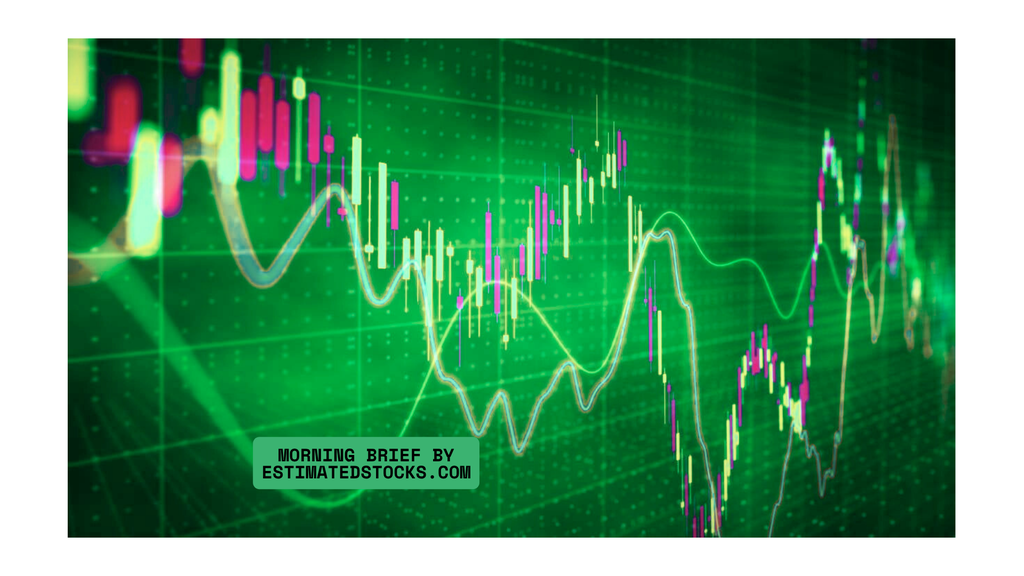
The global economy is at a turning point. The Fed's interest rate decisions will impact both US and global markets. Investors must stay alert, adapt strategies, and brace for change.
Global Economic Outlook and US Stock Market Movements: Mega Cap Tech Sector Analysis
Federal Reserve's Interest Rate Cuts and Investor Sentiments
As the US Federal Reserve prepares to make a significant decision on cutting interest rates, market participants are cautious, warning against aggressive moves that could unsettle investors. A key concern is the potential for “investor angst” if the Fed acts too abruptly. Many analysts suggest that a slow and steady approach to rate cuts could help maintain confidence in the economy.
The Federal Reserve's recent policy shifts have caused concerns among investors who fear the potential impact of a hawkish stance. High inflation, along with a series of rate increases over the past year, has placed pressure on consumers and the broader economy. Experts anticipate that the economy could face a recession by 2025, as rising inflation and other factors begin to weigh more heavily.
While the exact timing of a recession remains uncertain, many analysts advise caution. Historically, employment markets weaken at the onset of a recession, and while current data may seem stable, it is not always a reliable indicator of an impending downturn. The role of the Federal Reserve in responding to economic challenges will be crucial in determining whether a potential recession will be mild or more significant.
Portfolio Adjustments in Light of Rate Cuts
With interest rates having climbed significantly over the past couple of years, investors have been turning to cash and short-term assets such as certificates of deposit (CDs) and short-term government bonds. However, as the Federal Reserve is expected to cut rates soon, strategists suggest reassessing this strategy.
The shift toward lower rates could introduce "reinvestment risk," where investors are forced to adjust their portfolios to continue generating strong returns. Analysts advise keeping a close eye on the Federal Reserve's moves, as the environment for investments will change dramatically with lower rates.
Impact of Rate Cuts on Banking and Consumer Finances
Lower interest rates will have direct effects on consumer financial products, including savings accounts, loans, CDs, and credit cards. As rates decline, savers will likely see smaller returns on savings accounts and CDs, while borrowers may benefit from reduced interest rates on personal loans, mortgages, and credit cards.
Interest rates on savings accounts and money market accounts, which had increased over the last year, are expected to decline as the Fed reduces rates. Consumers looking to earn returns on their cash will need to shop around for competitive rates as providers gradually lower interest payouts. Similarly, those investing in CDs may want to consider locking in higher rates now, as future returns will likely decrease.
In contrast, borrowers may see some relief as interest rates on loans and credit cards start to fall. Personal loan rates have surged during the Fed’s tightening cycle, and consumers could benefit from lower rates in the coming months. Mortgage rates, which have also increased sharply, could stabilize, providing opportunities for refinancing and improved affordability in the housing market.
Credit card interest rates, which have climbed above 21%, are expected to ease slightly, though the process will be gradual. Consumers carrying balances could take advantage of balance transfer offers or refinancing options to reduce their debt more quickly.
The Tech Sector and Its Response to Economic Shifts
The US stock market, particularly the mega-cap technology companies, will be closely watching the Fed’s interest rate decisions. These tech giants, which have seen impressive growth over the last decade, are sensitive to changes in monetary policy. As the Fed lowers rates, companies in this sector could experience both positive and negative effects.
On the positive side, lower interest rates could reduce borrowing costs for companies, making it easier for them to finance growth initiatives, invest in new technologies, or engage in mergers and acquisitions. Moreover, a lower interest rate environment generally boosts equity markets as investors search for higher returns, potentially driving stock prices higher.
However, there are risks as well. High-growth tech companies, which rely on strong consumer demand and investor confidence, may face challenges if the broader economy weakens. A potential recession in 2025, as some experts have predicted, could dampen consumer spending and slow revenue growth for these firms. Additionally, inflationary pressures may affect the cost of doing business, cutting into profit margins for some companies.
As demand for cash and safe assets like short-term bonds rises in response to economic uncertainty, some tech companies could see increased volatility in their stock prices. Investors may become more risk-averse, preferring safer investments over the high valuations typical of many tech stocks. This could lead to short-term declines in the value of tech stocks, especially for those companies that are more heavily reliant on external financing.
Gold’s Rise Amid Economic Uncertainty
In times of economic instability, gold has traditionally served as a safe haven for investors. In 2024, gold prices have risen significantly, driven by concerns that the US is headed for a recession. Investors have been turning to the precious metal as a hedge against the economic uncertainty associated with rate cuts and potential downturns.
As the Federal Reserve continues to lower rates, there is growing concern that the US economy could experience a hard landing. Gold typically outperforms equities in times of recession, and many investors view it as a protective asset against future economic shocks.
The rise in gold prices also coincides with increasing geopolitical risks and a revival of demand from central banks, which are diversifying their reserves. This resurgence in gold demand is further amplified by the uncertainty surrounding the US economy and the potential for inflation to remain elevated in the medium term.
Challenges Facing Global Markets
While the focus has largely been on the US economy, global markets are also grappling with significant challenges. In Europe, inflationary pressures remain a concern, and central banks are balancing the need for economic growth with the risks of raising rates too aggressively. The energy crisis, coupled with geopolitical tensions, has added another layer of complexity to Europe's economic outlook.
Asian markets, particularly in China, are facing their own set of economic challenges. A slowdown in the Chinese economy, combined with lingering issues in the property market, has created uncertainty for investors in the region. Many global investors are keeping a close eye on how the Chinese government will respond to these challenges and whether further stimulus measures will be introduced to support growth.
The US economy, while more resilient in some respects, is not immune to global shocks. The interconnectedness of global markets means that events in Europe and Asia could have ripple effects on US businesses and investors. The technology sector, in particular, is highly globalized, with many companies relying on supply chains and customer bases that span multiple regions.
Author's Analysis, Trends, and Key Insights
European Markets: European economies are facing inflationary pressures while dealing with energy concerns and geopolitical risks. Central banks in the region are carefully balancing economic growth with the need to control inflation, leading to potential volatility in European markets.
Asian Market Challenges: China’s economic slowdown, combined with issues in its property market, creates significant challenges for investors in the region. Many are looking to the Chinese government for signs of additional stimulus or economic support measures.
US Market Outlook: The US economy is focused on the Federal Reserve’s upcoming interest rate decisions and their potential effects. Lower rates may offer relief to consumers and businesses by reducing borrowing costs, but concerns about a possible recession in 2025 are growing. Mega-cap tech companies could benefit from cheaper financing, yet face risks if consumer spending declines or inflation stays elevated.
Globally, the economic landscape is at a critical juncture. The Fed’s interest rate actions will not only influence the US economy but also impact global markets. Investors must stay alert, adjust strategies, and be prepared for both challenges and opportunities in the months ahead.
Disclaimer:
The information provided in this article is for educational purposes only and should not be construed as investment advice. estima...
Author
Shaik K is an expert in financial markets, a seasoned trader, and investor with over two decades of experience. As the CEO of a leading fintech company, he has a proven track record in financial products research and developing technology-driven solutions. His extensive knowledge of market dynamics and innovative strategies positions him at the forefront of the fintech industry, driving growth and innovation in financial services.


